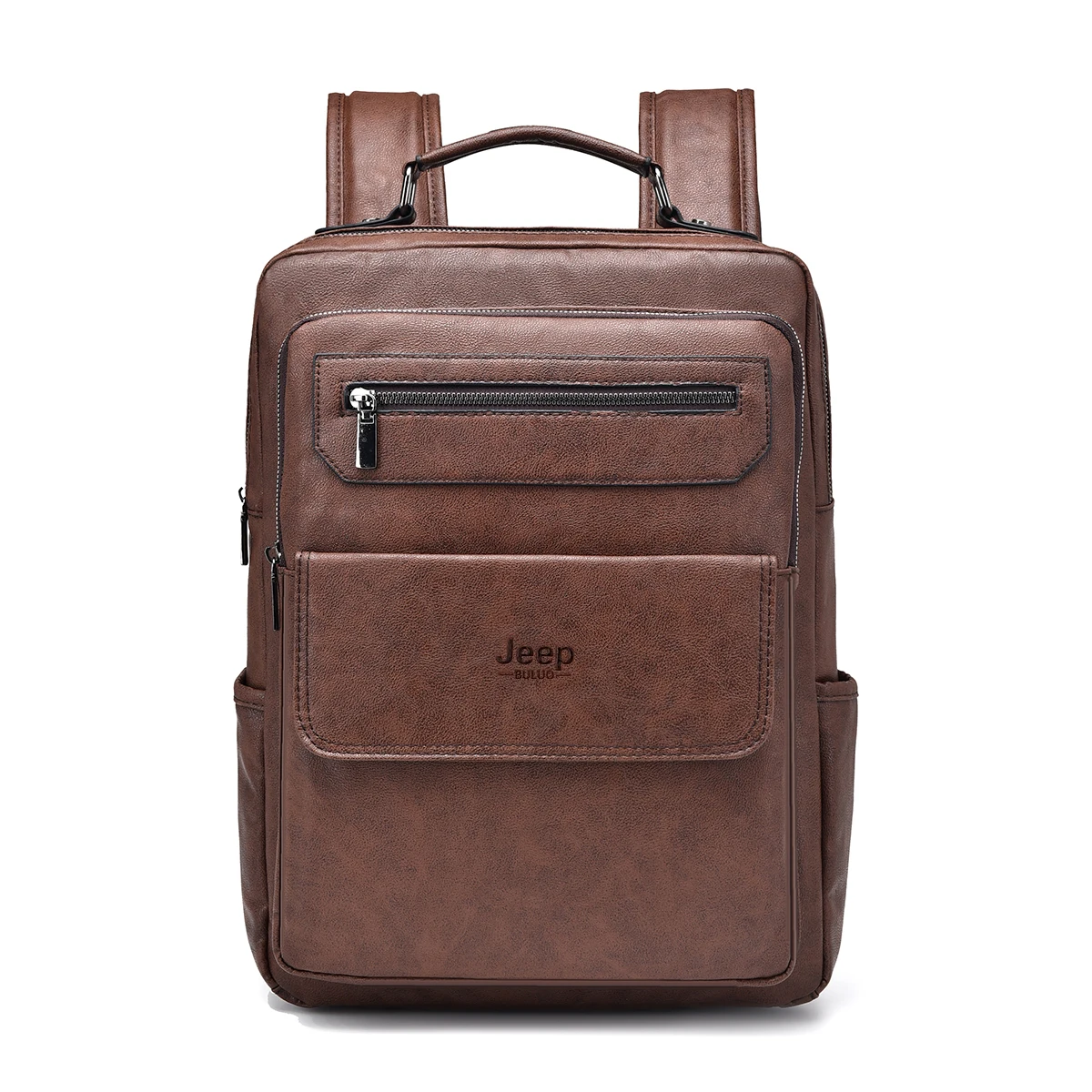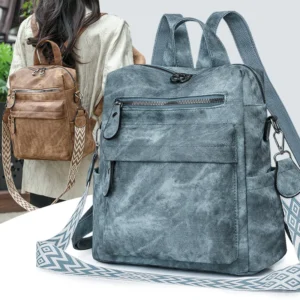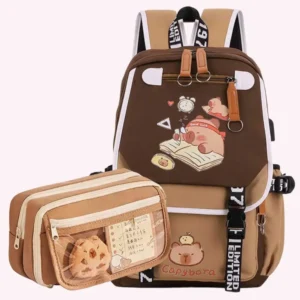Introduction to Leather Rucksack Sizing
When it comes to leather rucksacks, finding the right size isn’t just about aesthetics—it’s about ensuring comfort, functionality, and longevity. Unlike their synthetic counterparts, leather rucksacks have unique sizing considerations that stem from the natural properties of leather itself. The material’s thickness, weight, and breaking-in characteristics all influence how a rucksack fits and feels when worn.
Proper sizing is crucial for several reasons. A rucksack that’s too large may cause unnecessary strain on your back and shoulders, while one that’s too small won’t accommodate your essential items. Both scenarios lead to frustration and potentially wasted investment. The beauty of leather rucksacks lies in their ability to last for years—even decades—making the initial sizing decision all the more important.
When exploring rucksack sizing, you’ll encounter two primary measurements: capacity (measured in liters) and physical dimensions (height, width, and depth). Understanding both aspects ensures you select a rucksack that not only holds what you need but also fits your body comfortably. Many shoppers focus solely on one aspect, often leading to disappointment when their comprehensive guide on choosing leather rucksacks reveals they’ve selected incorrectly.
Before diving deeper into specific measurements, browse through various leather rucksack options to familiarize yourself with the range of styles and sizes available. Let’s explore how to find your perfect fit.
Understanding Rucksack Capacity: The Liter System
The liter measurement of a rucksack refers to its internal volume capacity—essentially how much stuff it can hold. Manufacturers determine this rating by filling the bag with small plastic balls of known volume or through computer-aided design measurements during production. It’s worth noting that leather rucksacks may have slightly different usable capacity compared to synthetic ones of the same liter rating because leather’s structure and thickness can impact the internal space.
When selecting a leather rucksack, understanding what different capacity ranges accommodate is essential:
Small Capacity (10-20 Liters): Perfect for daily essentials and minimalist carry. These rucksacks typically hold a tablet or small laptop, wallet, phone, keys, and perhaps a light jacket or book. Ideal for urban commutes and situations where you only need the basics.
Medium Capacity (20-35 Liters): The sweet spot for most users, offering versatility for work, gym, and overnight trips. A 25L rucksack, for example, can typically accommodate a 15” laptop, lunch container, water bottle, notebook, gym clothes, and a few personal items.
Large Capacity (35+ Liters): Designed for extended travel, outdoor adventures, or those who simply carry more gear. These larger rucksacks can hold multiple days’ worth of clothing, larger electronics, books, and other bulky items.
When considering capacity, think about your typical daily carry items. A simple way to visualize: a standard water bottle is roughly 1 liter, while a typical grocery bag holds about 10-15 liters worth of items. Understanding what to look for in leather rucksacks helps ensure you select the right capacity for your needs.
External Dimensions: Beyond Volume Capacity
While capacity tells you how much a rucksack can hold, external dimensions reveal how the bag will look and feel on your back, whether it will fit under an airplane seat, or into a locker. Three key measurements define a rucksack’s external size: height (from bottom to top), width (from side to side), and depth (from front to back when worn).
To measure a leather rucksack accurately:
- Place the rucksack on a flat surface, empty and with all straps secured
- Measure the height from the lowest point to the highest point
- Measure the width at the widest part of the bag
- Measure the depth from front to back at the thickest point
For those who travel frequently, standard airline carry-on restrictions typically limit bags to approximately 22” × 14” × 9” (56 × 36 × 23 cm). Many carry-on leather backpacks are specifically designed to meet these requirements while maximizing usable space.
An important consideration with leather rucksacks is that the material’s thickness affects both external measurements and internal capacity. Full-grain leather, prized for its durability, may be thicker than other materials, potentially reducing internal space by 5-10% compared to a synthetic bag of identical external dimensions. The leather carry-on backpack dimensions guide provides more specific information about sizing for air travel.
Remember that external dimensions are just one part of the sizing equation—how the rucksack fits your body is equally important.
The Perfect Fit: Measuring Your Torso Length
A common misconception is that your height determines the right rucksack size. In reality, torso length is the crucial measurement. Two people of identical height can have significantly different torso lengths, resulting in completely different rucksack fit requirements.
To measure your torso length:
- Find your C7 vertebra—the prominent bump at the base of your neck when you tilt your head forward
- Locate your iliac crest—the top of your hip bones (place your hands on your hips and feel for the shelf-like bone structure)
- Ask someone to measure the distance along your spine from the C7 vertebra down to the imaginary line connecting the tops of your hip bones
- This measurement in inches or centimeters is your torso length
A properly sized rucksack should have its shoulder straps starting just below or at your C7 vertebra, with the bottom of the bag sitting comfortably above or at your iliac crest. This positioning ensures optimal weight distribution, reducing strain on your shoulders and back during extended wear.
Selecting a rucksack based on backpack size guide for your body type dramatically improves comfort, especially when carrying heavier loads. The right fit means better balance, less fatigue, and reduced risk of back pain or injury.
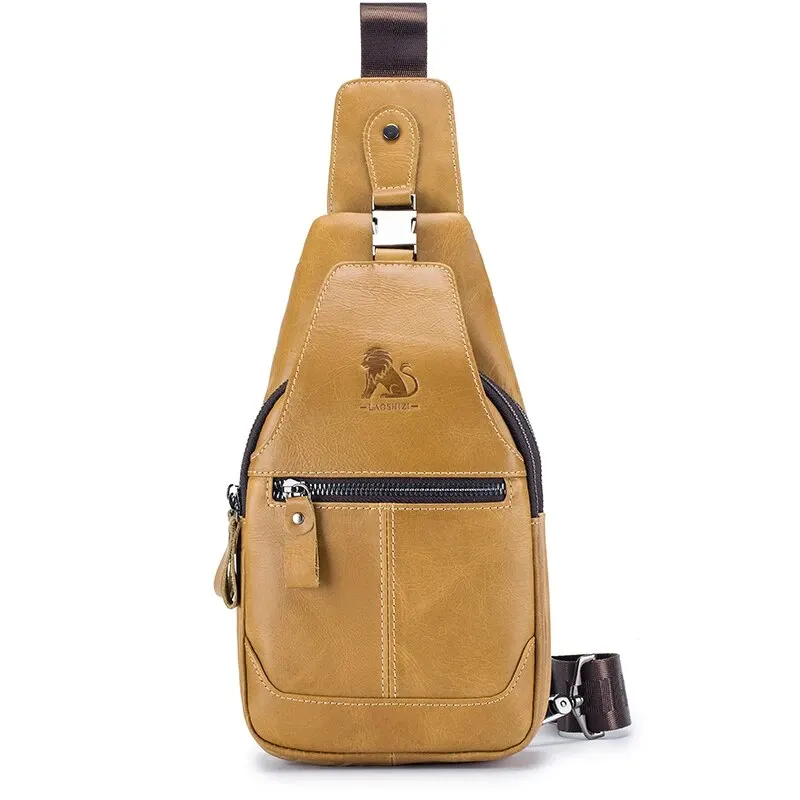
Comprehensive Leather Rucksack Sizing Chart
Use the following chart to determine which rucksack size might work best for your needs based on capacity, dimensions, and torso length. Remember that these are general guidelines—individual brands may have slight variations.
| Capacity | Approximate Dimensions (H×W×D) | Ideal Torso Length | Best For | Typically Fits |
|---|---|---|---|---|
| 10-15L | 16”×10”×5” (41×25×13cm) | 14-17” (35-43cm) | Daily essentials, minimalist approach | Tablet, small items, light jacket |
| 16-20L | 18”×11”×6” (46×28×15cm) | 15-18” (38-46cm) | Daily commute, casual use | Small laptop (13”), daily essentials, lunch |
| 21-30L | 19”×12”×7” (48×30×18cm) | 16-19” (41-48cm) | Work, gym, day travel | 15” laptop, change of clothes, books, water bottle |
| 31-40L | 21”×13”×9” (53×33×23cm) | 17-20” (43-51cm) | Weekend trips, light travel | Multiple clothing items, toiletries, 15” laptop |
| 41L+ | 23”×14”×10”+ (58×36×25cm+) | 18”+ (46cm+) | Extended travel, outdoor activities | Multiple days of clothing, gear, equipment |
For those seeking a more compact option, our small leather backpack collection offers stylish solutions that don’t compromise on quality or functionality. When using this chart, consider your typical usage patterns and what items you regularly carry.
How to Properly Adjust Your Leather Rucksack
Even the perfectly sized rucksack won’t feel right without proper adjustment. Leather rucksacks often require a specific adjustment process to account for the material’s initial stiffness and breaking-in period.
Follow this sequence for optimal fit:
Hip Belt (if available): Position the belt so it sits directly on top of your hip bones, not above or below. Tighten so it bears 70-80% of the load weight.
Shoulder Straps: Adjust so they curve smoothly around your shoulders without gaps or pinching. There should be no pulling at the top of your shoulders.
Sternum Strap: Position across your chest (not throat), approximately 1-2 inches below your collarbone. This strap stabilizes the load rather than bearing weight.
Load Lifters: If your rucksack has these straps at the top of the shoulder straps, adjust them to a 45-degree angle to bring the pack’s weight closer to your back.
When first using a leather rucksack, remember that the material will soften and conform to your body over time. Initial stiffness in straps and backing will gradually give way to a custom-fitted feel that synthetic materials rarely achieve. Understanding leather rucksack features for different use cases helps you maximize comfort through proper adjustment.
Material Matters: Leather’s Impact on Rucksack Sizing
The type of leather used in your rucksack significantly influences how it fits, feels, and functions. Full-grain leather, the highest quality option, is typically thicker and heavier than top-grain or genuine leather. This extra weight means a 20L leather rucksack will generally weigh 20-30% more than a 20L synthetic bag.
Leather rucksacks generally fall into two design categories:
- Structured designs maintain their shape whether empty or full, providing better protection for contents but potentially feeling bulkier
- Unstructured designs conform more to your body and contents, feeling sleeker but offering less protection for fragile items
Another key consideration is how leather changes over time. Unlike synthetic materials, leather will stretch slightly, soften, and develop a patina with use. A properly sized leather rucksack might feel slightly snug initially but will likely become more accommodating with regular use. Environmental factors also play a role—leather can temporarily expand in humid conditions and contract in dry environments.
The optimal leather thickness for backpacks balances durability with comfort. Too thick, and the bag becomes unnecessarily heavy; too thin, and longevity is compromised.
Measuring Your Daily Gear: Ensuring Everything Fits
Before selecting a rucksack size, inventory what you typically carry daily. Here’s how to measure common items to estimate your capacity needs:
Laptops: Measure diagonally (screen size) plus allow for protective padding. A 15” laptop typically requires a rucksack with at least 18L capacity.
Books and notebooks: Measure height × width × thickness of all items combined. Standard textbooks average about 1-2L in volume each.
Clothing: A light jacket or sweater takes approximately 2-3L, while gym clothes might require 3-4L.
Lunch containers: Typical containers range from 0.5-1.5L in volume.
Remember to account for organization features. A rucksack with multiple compartments might have slightly less overall capacity than one large compartment of the same liter rating, but offers better organization.
Consider seasonal changes as well—winter clothing is bulkier than summer wear, potentially requiring an additional 2-5L of capacity during colder months.
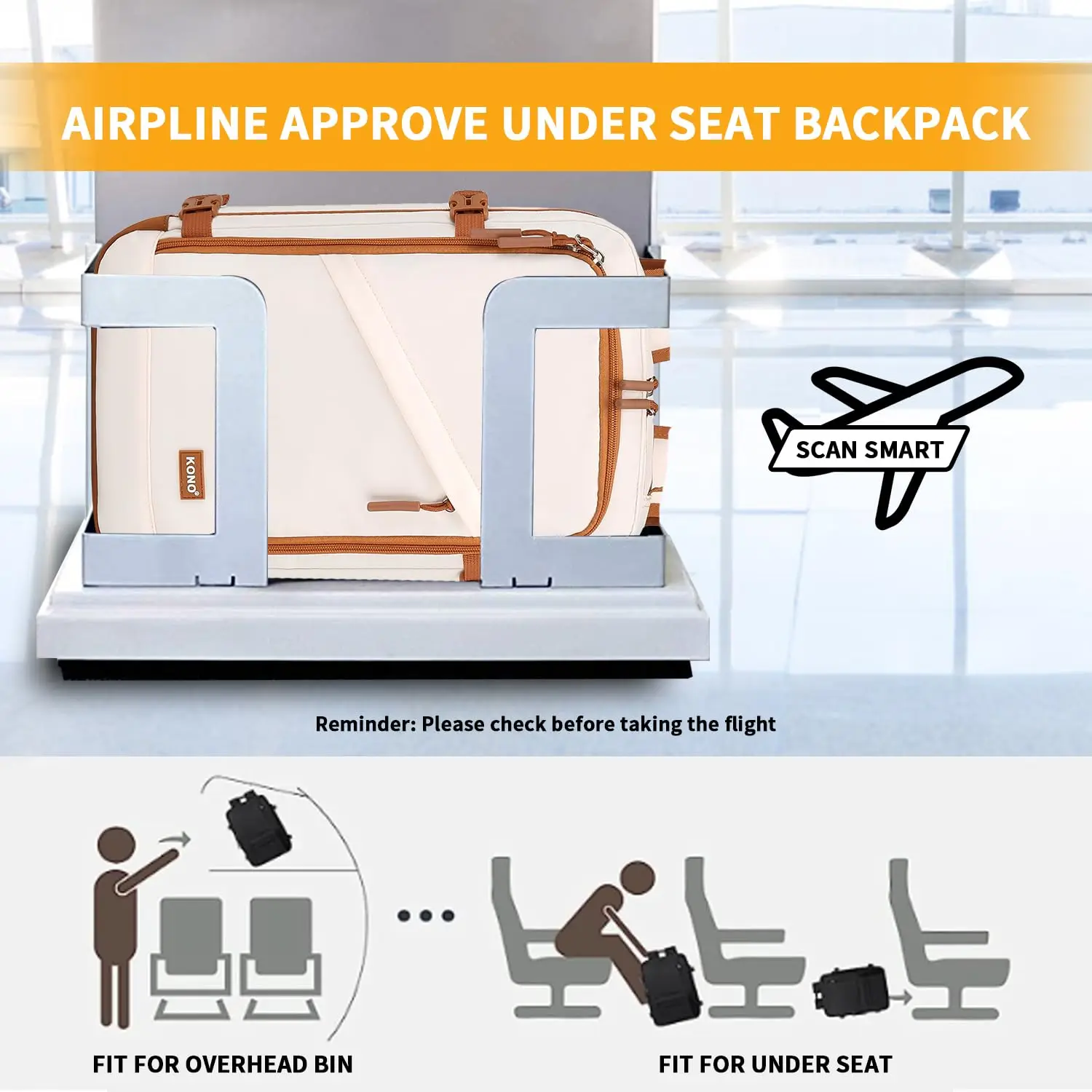
For those who regularly carry more substantial loads, our large leather backpack collection offers spacious options without sacrificing style.
Rucksack Sizing for Different Activities
Different activities demand different rucksack sizes. Here are recommendations for common scenarios:
Daily Commuting: A 15-20L rucksack typically provides sufficient space for a laptop, charger, water bottle, snack, and small personal items. Look for a slim profile that navigates crowded spaces easily while maintaining a professional appearance.
Academic Use: Students generally need 20-25L to accommodate textbooks, notebooks, a laptop, and personal items. Consider a rucksack with a padded laptop compartment and multiple organization pockets.
Weekend Travel: A 25-35L rucksack offers enough space for 2-3 days of clothing, toiletries, and essentials. Look for designs with compression straps to stabilize partially-filled loads.
Business Travel: Professionals typically need 25-30L with specific compartments for documents, electronics, and a change of clothes. Choose a design that looks appropriate in professional settings.
Outdoor Activities: Day hikes generally require 20-25L, while more extensive adventures may demand 35L or more to accommodate extra layers, food, water, and safety equipment.
The guide to selecting travel rucksacks provides more detailed information on choosing the right size for various travel scenarios. The key is selecting a size that accommodates what you need without encouraging overpacking, which leads to unnecessary weight and strain.
14 Inch Leather Laptop Backpack, Brown Leather Backpack, Men's Leather Backpack, Vintage Leather Backpack
Price range: $177.28 through $199.12 Select options This product has multiple variants. The options may be chosen on the product pageCarry On Leather Backpack, Roll Top Leather Backpack
Price range: $77.76 through $96.48 Select options This product has multiple variants. The options may be chosen on the product pageDesigner Mini Backpack, Mini Leather Backpack, Small Leather Sling Backpack, Women's Leather Backpack
Price range: $95.76 through $98.80 Select options This product has multiple variants. The options may be chosen on the product pageDesigner Mini Backpack, Designer Women's Backpack, Mini Leather Backpack, Women's Leather Backpack
Price range: $135.92 through $137.64 Select options This product has multiple variants. The options may be chosen on the product pageBlack Leather Backpack, Small Leather Backpack, Women's Leather Backpack
Price range: $112.96 through $116.12 Select options This product has multiple variants. The options may be chosen on the product page- Price range: $80.72 through $108.04 Select options This product has multiple variants. The options may be chosen on the product page
Common Sizing Mistakes to Avoid
Many rucksack buyers make similar sizing mistakes. Avoid these common pitfalls:
Prioritizing appearance over fit: A stylish but poorly-sized rucksack quickly becomes uncomfortable. Proper fit should always take precedence over aesthetic considerations.
Buying oversized “just in case”: While it may seem practical to have extra space, an oversized rucksack encourages overpacking and creates unnecessary strain. Choose a size that fits your regular needs, not occasional exceptions.
Ignoring torso measurements: Your height doesn’t determine the right rucksack size—your torso length does. Skipping this measurement often results in poor weight distribution and discomfort.
Underestimating leather’s weight: Leather is heavier than synthetic materials. A full leather rucksack will weigh more than a similarly-sized synthetic option, especially when loaded. Consider this additional weight when selecting your size.
Overlooking strap adjustability: Some buyers focus exclusively on the bag itself and ignore the adjustment range of straps. Proper adjustability can sometimes compensate for minor sizing issues.
The men’s leather backpack collection offers various sizes designed with proper ergonomics in mind, helping you avoid these common mistakes.
Tips for Testing Fit Before Purchase
Finding the perfect fit sometimes requires hands-on testing. Here’s how to evaluate a rucksack effectively:
In-store testing: Add weight to the rucksack (most stores have weight packs for this purpose). Walk around for 10-15 minutes, climb stairs, and bend over to simulate real-world use.
Questions for online purchases: Ask specific questions about dimensions, torso fit range, and capacity. For example: “What is the laptop compartment’s maximum dimensions?” or “What is the recommended torso length range for this model?”
Photo analysis: When shopping online, look for images showing the rucksack on models of different heights. Product descriptions should include model height and rucksack size for reference.
Household comparisons: Use similarly sized objects at home to visualize dimensions. A paper grocery bag is roughly 20L, while a standard pillow approximates the space of a 30L rucksack.
Return policies: Before purchasing online, verify the return policy allows for returns after trying on the empty rucksack (but not using it outdoors).
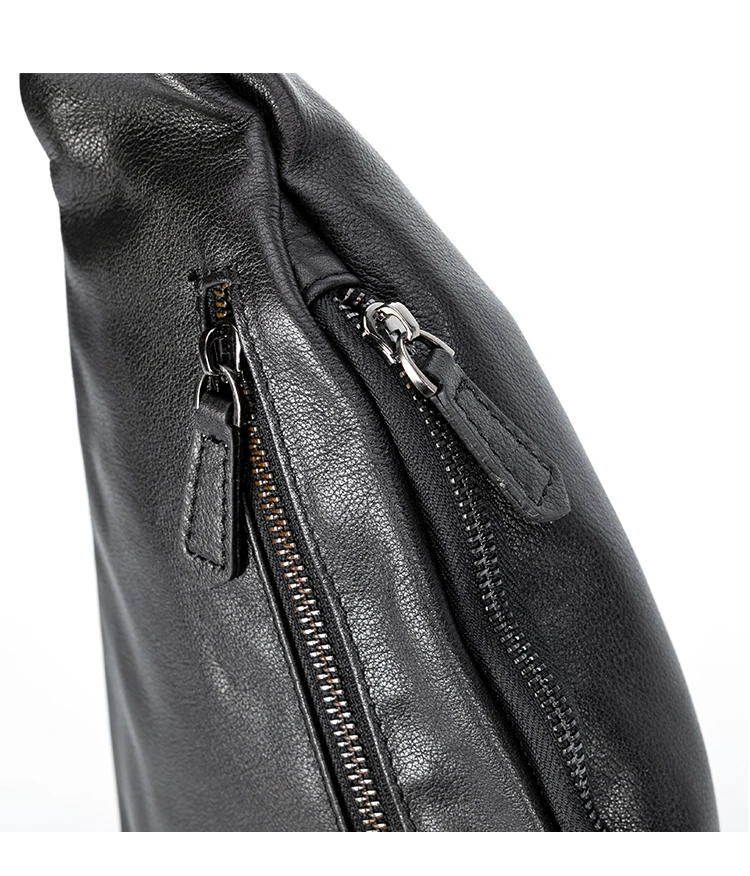
Frequently Asked Questions About Leather Rucksack Sizing
Is there a standardized sizing system across brands?
No, there isn’t a universal standard. Different manufacturers may measure capacity slightly differently, which is why checking specific dimensions is important.
Can I comfortably use a larger rucksack when it’s not completely full?
Yes, but a partially-filled rucksack may shift weight unpredictably unless it has compression straps. For everyday use, it’s better to choose a size that matches your typical load.
How much will my leather rucksack stretch or conform over time?
Quality leather typically conforms to your body shape and may expand slightly in capacity (5-10%) as it softens with use, particularly in unstructured designs.
Does leather thickness significantly impact internal capacity?
Yes. Thicker leather (especially in structured designs) reduces internal space compared to thin synthetic materials with the same external dimensions.
How do I know if a rucksack is too large or small for my frame?
A properly sized rucksack should not extend above your shoulders or more than 4-6 inches below your waist. The width should not exceed the width of your back.
Our women’s leather backpack collection comes in various sizes to accommodate different frames and carrying needs.
When to Size Up or Size Down: Special Considerations
There are times when standard sizing recommendations might not apply to your specific situation:
When to size up:
* If you regularly carry bulky but lightweight items
* For winter use when clothing layers are thicker
* If you have a longer-than-average torso for your height
* When your professional needs require carrying documents, samples, or presentation materials
When to size down:
* If you have back or shoulder issues and need to limit how much you carry
* For slimmer aesthetic in professional environments
* When primarily using public transportation or navigating crowded spaces
* If you’re deliberately creating a minimalist everyday carry system
Remember that the perfect rucksack balances your practical needs with comfort and aesthetic preferences. With proper sizing knowledge, you can find a leather rucksack that serves you well for many years to come, developing character and becoming more comfortable with each use.

